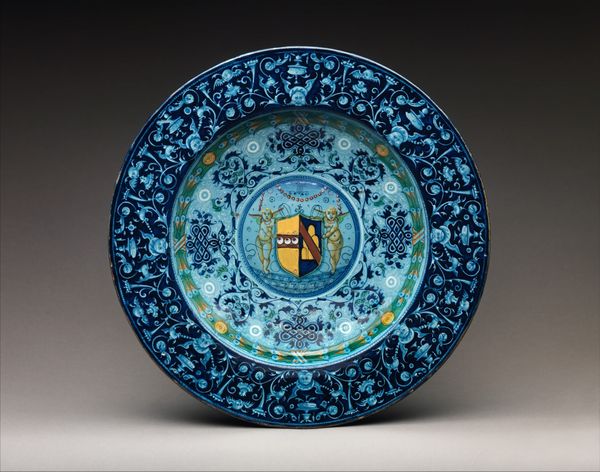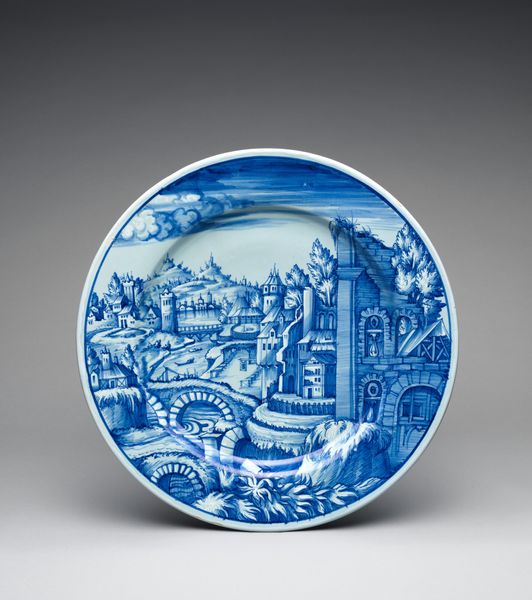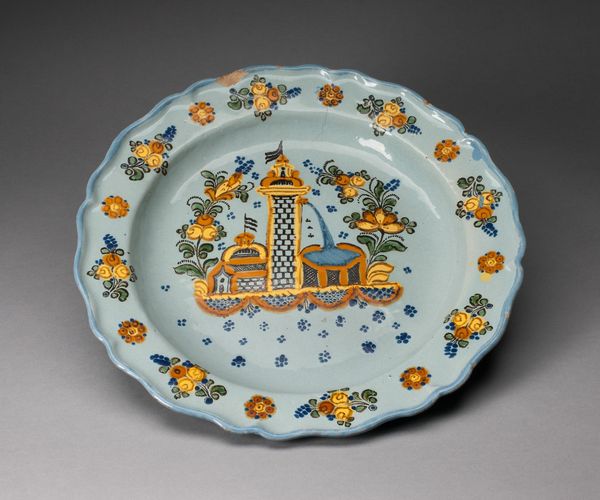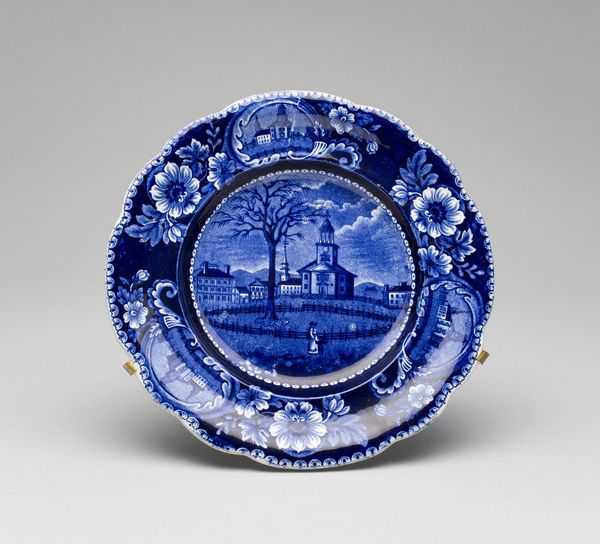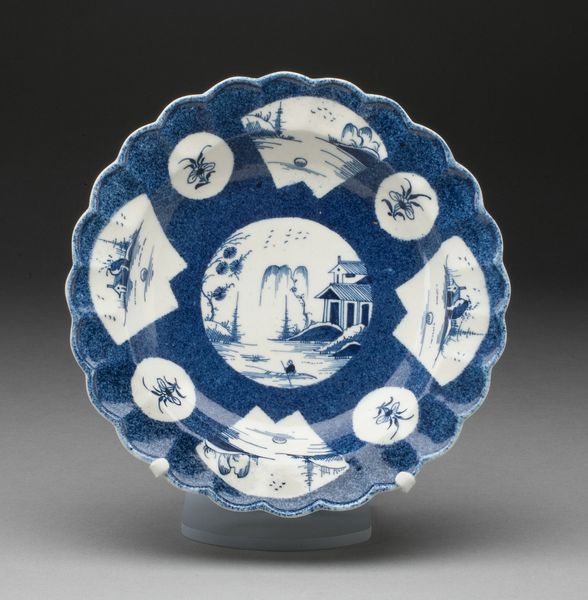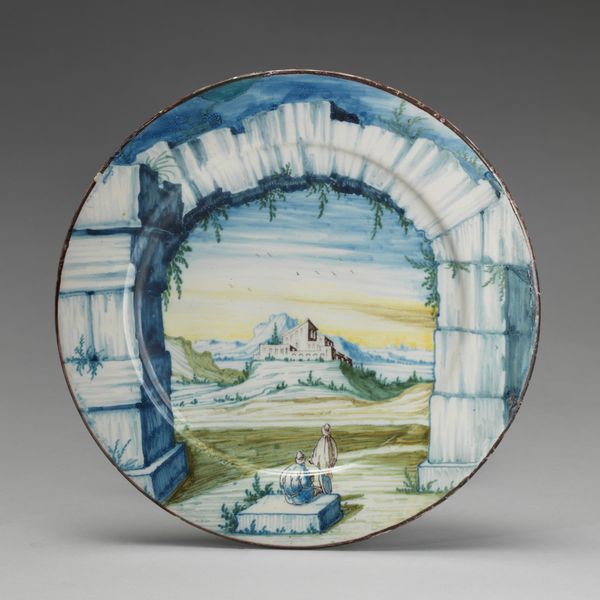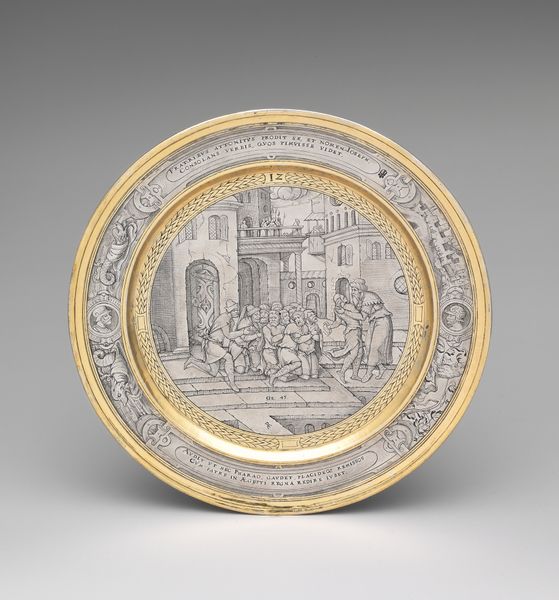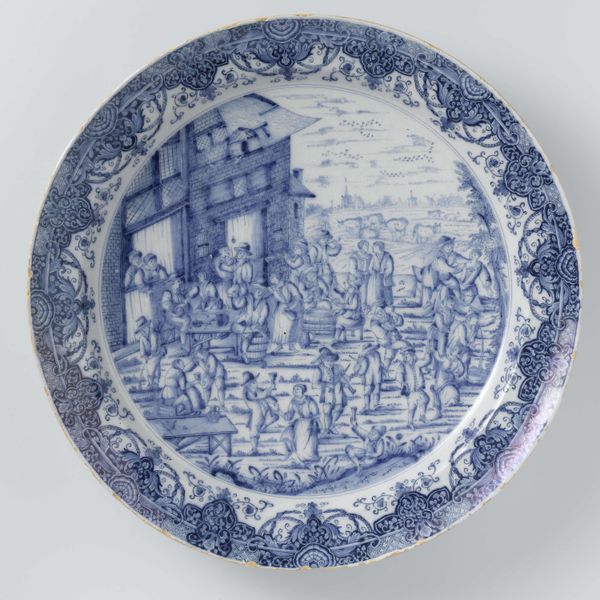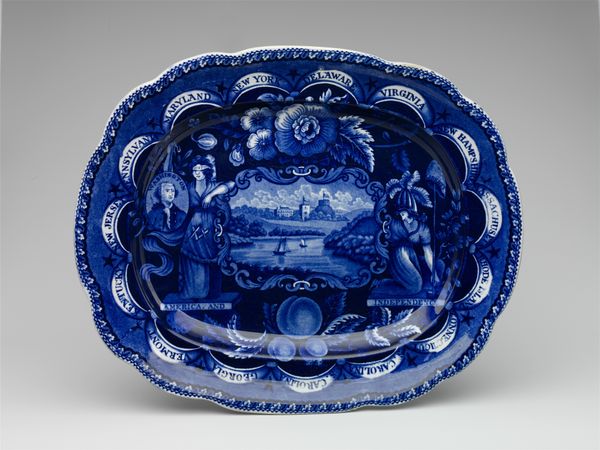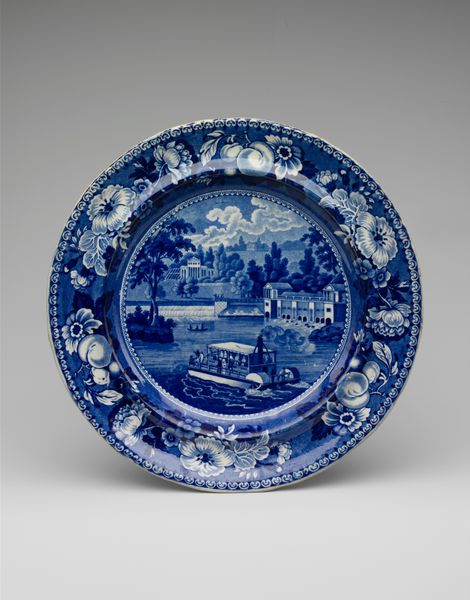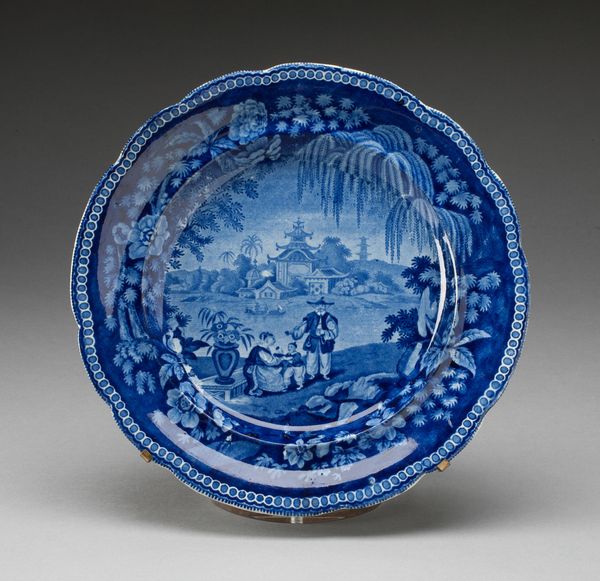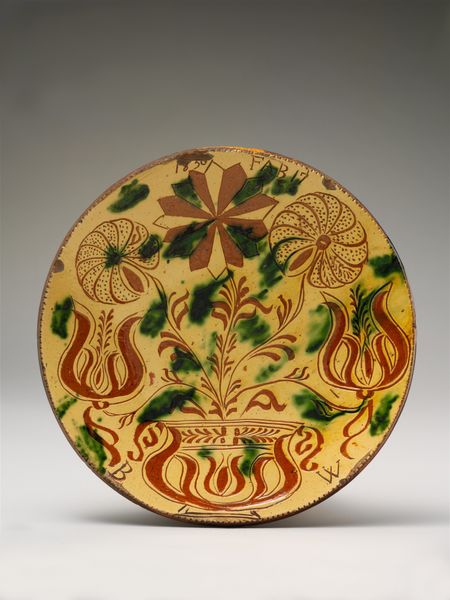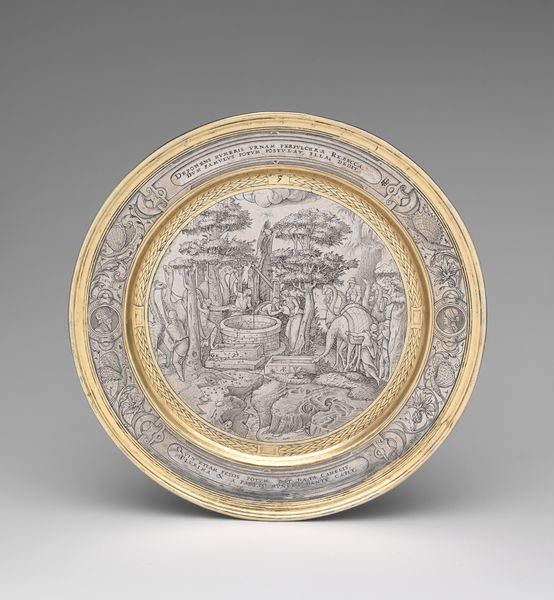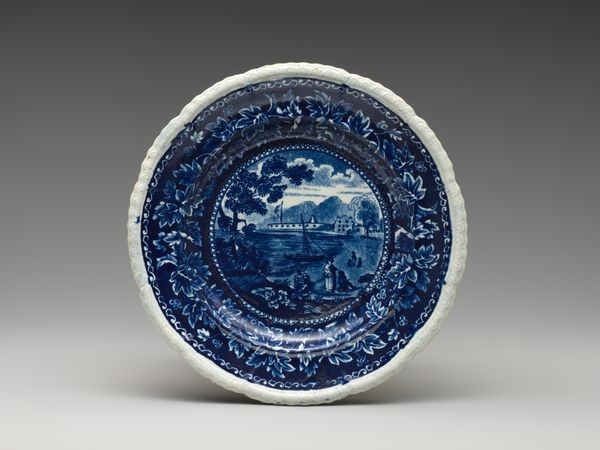
ceramic, earthenware
#
neoclassicism
#
landscape
#
ceramic
#
vessel
#
earthenware
#
romanticism
#
genre-painting
#
decorative-art
Dimensions: Diam. 22.1 cm (8 11/16 in.)
Copyright: Public Domain
Curator: Before us is a remarkable piece of Montereau pottery from between 1840 and 1860, simply titled "Plate," currently residing at The Art Institute of Chicago. Editor: My first impression is how surprisingly pastoral this plate feels, despite being ceramic. The monochromatic scheme emphasizes form, directing your eyes immediately to the scene depicted at its center. Curator: Indeed. The romantic landscape illustration reflects a broader fascination during the mid-19th century with idealized views of nature and rural life. The rising bourgeois class adopted this aesthetic for decorative arts showcasing status and taste. Editor: Observe how the composition is divided: a foreground with a calmly grazing animal, a middle ground presenting the imposing tower and bridge, and finally, a suggestive background with faded, distant hills. Curator: The plate's appeal would have rested not just in the aesthetic enjoyment, but in the implied narratives and values. Owning such a piece spoke of a refined appreciation for landscape, harking back to neoclassicism’s interest in idealized life while romanticizing rustic charm. It helped to normalize particular notions about progress and control over nature. Editor: I'm particularly drawn to the almost symmetrical layout, reinforced by the placement of the architecture at the center. The flowing lines and rounded shapes echo throughout. The border is dense and vivid. Note the stylized foliage motif contrasting in texture to the inner artwork. Curator: Ceramics like this became accessible to a wider public during this period, due to industrial production. It shows how tastes and styles trickle down and transform as art gets embedded in domestic, daily use. This piece acts as evidence of changing socioeconomic norms. Editor: What remains striking for me is how successful the potter was in conveying a sense of depth and detail using just tone and subtle shading. The plate is functional, of course, but manages to operate as both objet d’art and a microcosm of landscape painting. Curator: The plate's success lay precisely in its ability to meld art into the everyday, mirroring and molding bourgeois aspirations within domestic walls. Editor: And aesthetically, its refined balance ensures the image’s enduring appeal—a harmonious fusion of function, form and the beguiling world of genre-painting in a self-contained microcosm.
Comments
No comments
Be the first to comment and join the conversation on the ultimate creative platform.
